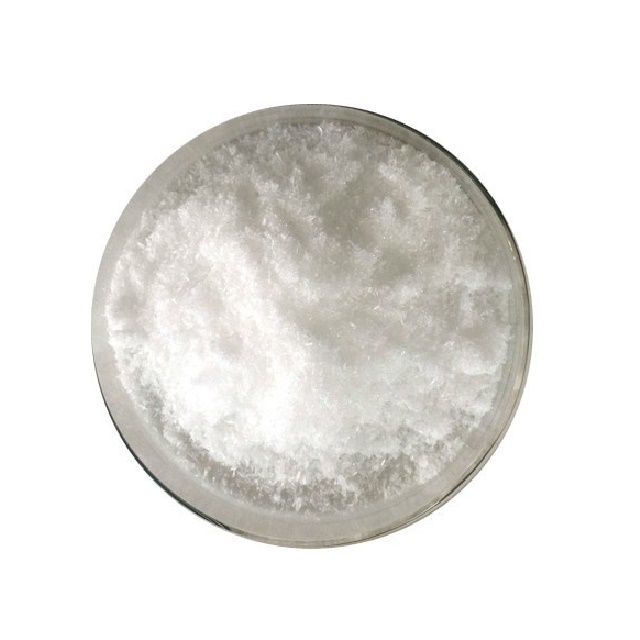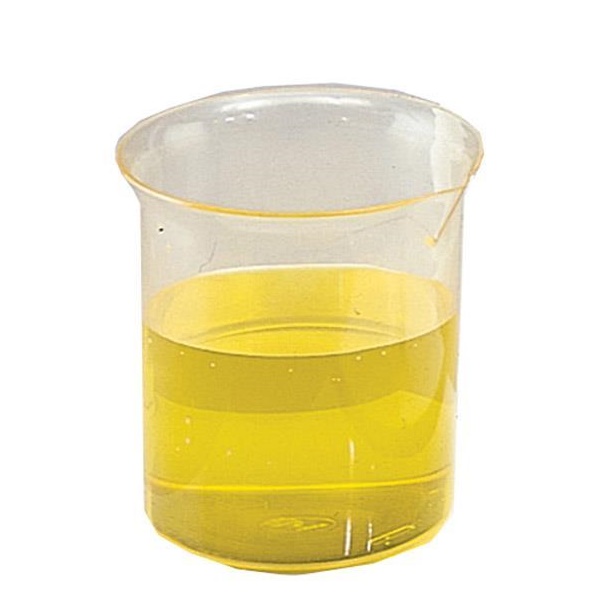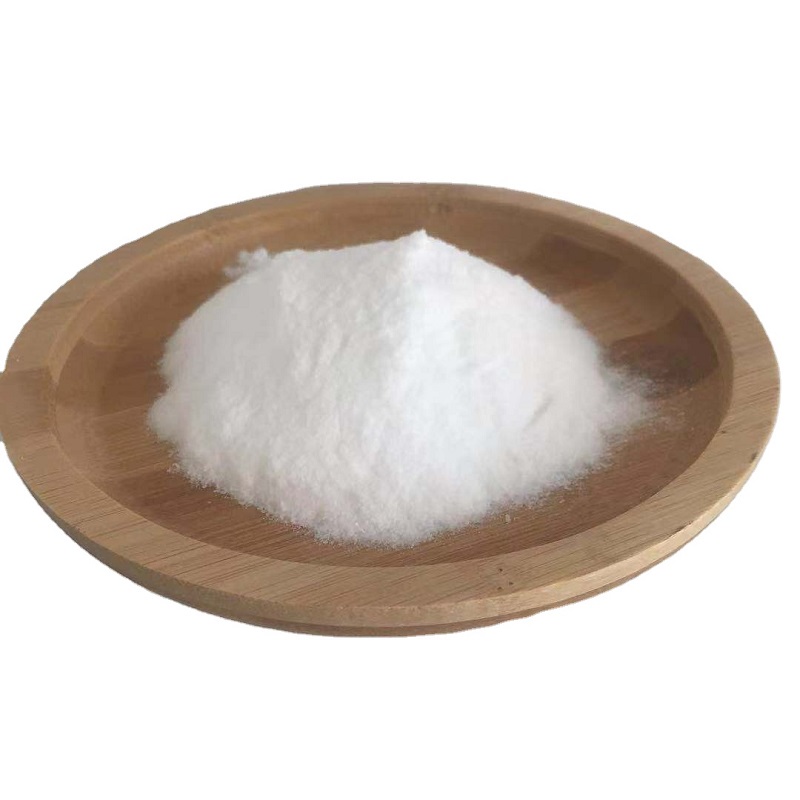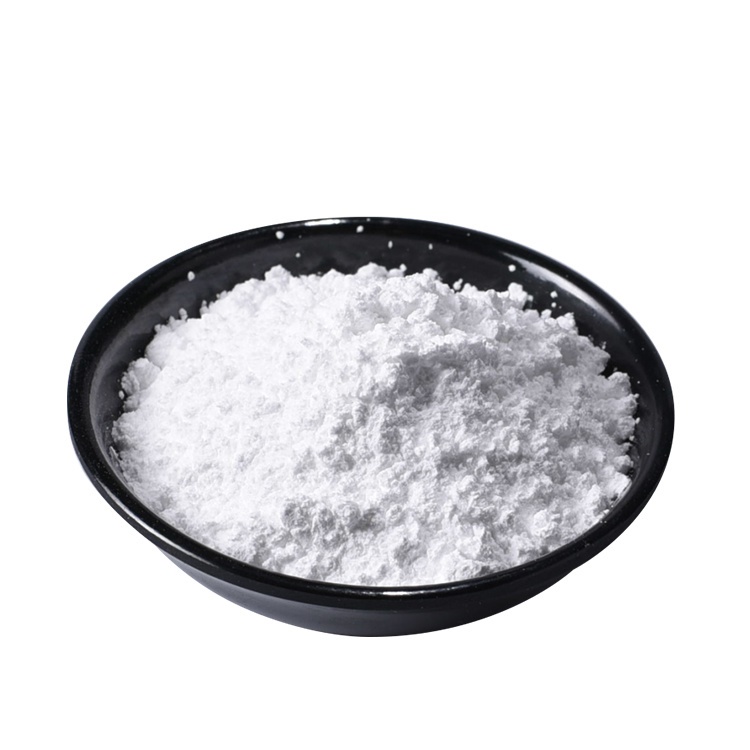

Trichloroacetic acid CAS 76-03-9
——————
CAS number : 76-03-9
molecular formula : C2HCl3O2
EINECS : 200-927-2
——————
Email : info@deshangchem.com
Mobile : +86-13153039501
TEL : +86-531-88752665
CAS number:76-03-9
molecular formula:C2HCl3O2
molecular weight:163.39
EINECS number:200-927-2
English synonyms
Deblock trichloroacetic acid solution;TRICHLOROACETIC ACID extrapure;RARECHEM AL BO 0072;Aceticacid,trichloro-;Aceto-Caustin;Acide trichloracetique;acidetrichloracetique;acidetrichloracetique(french)
Related categories
Pesticide intermediates; Insecticide intermediates; Organophosphorus insecticides; Pharmaceutical intermediates; Halogenated substances; Other biochemical reagents; API; ;Diagnostic reagents; Microorganisms; Biochemistry; Acids; Organic chemicals; Pharmaceutical raw materials; Gas chromatography standards (color code); Industrial raw materials; Biochemical reagents; Organic chemical raw materials;Biotech Solvents;Solvents;Acids and Bases;Analytical Reagents for General Use;Histological Solvents;Puriss p.a. ACS;Analytical Reagents;Analytical/Chromatography;Biochemicals and Reagents;Denaturation;Solvent by Application;T-Z;cosmetics materials;cosmetics chemical;intermediates;Organic chemistry; Pharmaceutical intermediates; pharmaceutical raw materials; chemical intermediates; organic intermediates; fine chemical raw materials; chemical materials; chemical raw materials; 76-03-9; API raw materials; basic organic reagents
Introduction
Trichloroacetic acid is referred to as TCA. Colorless or white orthorhombic crystals. Has strong deliquescence. Has a slight irritating odor. It is highly corrosive. The relative molecular mass is 163.40. The relative density is 1.6298 (61°C). The melting point is 57-58°C. The boiling point is 197.5°C, 141~142°C (3.333×103Pa). The heat of combustion is 3.0kJ. The refractive index is 1.4603 (61°C). The vapor pressure is 0.133×103Pa (51°C). Easily soluble in water, the aqueous solution is acidic (0.1mol aqueous solution pH1.2), soluble in ethanol, ether, solubility at 25°C: water 1306, methanol 2143, ether 617; aqueous solution below 30% slowly decomposes into chloroform, hydrogen chloride, Carbon dioxide, carbon monoxide, etc.; hydrolyze into chloroform and carbon dioxide in dilute alkali solution; hydrolyze into formic acid in concentrated alkali solution. It can be decomposed into chloroform and carbonate by the action of strong alkali.
Trichloroacetic acid can be obtained by direct chlorination of acetic acid or oxidation of chloral by nitric acid: CCl3CHO+2HNO3→CCl3COOH+2NO2+H2O.
| Melting point | 54-58 °C (lit.) |
| Boiling point | 196 °C (lit.) |
| Density | 1.62 g/mL at 25 °C (lit.) |
| Vapour density | <1 (vs air) |
| Vapor Pressure | 1 mm Hg ( 51 °C) |
| Refractive index | n20/D 1.62(lit.) |
| Flash point | 196°C |
| Storage conditions | Store at +15°C to +25°C. |
| Solubility | H2O: 0.5 M at 20 °C, clear, colorless |
| Shape | Solid |
| Acidity coefficient(pKa) | 0.7(at 25℃) |
| Color | White |
| PH value | <1.0 (25℃, 0.5M in H2O) |
| Water solubility | 120 g/100 mL (20 ºC) |
| Maximum wavelength(λmax) | 210nm(EtOH)(lit.) |
| Sensitive | Hygroscopic |
Merck | 14,9627 |
BRN | 970119 |
| Exposure Limits | ACGIH: TWA 0.5 ppm |
| Stability | Stable, but moisture sensitive. Incompatible with water, strong bases. Note that the Merck Index states that this material is hydrolytically unstable in aqueous solution below 30% by weight. Decomposition products include carbon monoxide and carbon dioxide. The generation of these gases in a sealed container may lead to a pressure rise sufficien |
| CAS database | 76-03-9(CAS DataBase Reference) |
Trichloroacetic acid is a strong organic acid with a dissociation constant K=3×10-2. The chemical properties are active, and its sodium salt is easy to decarboxylate into chloroform, and it will be reduced to alcohol when it encounters LiAlH4, and it will undergo a halogen replacement reaction with KBr
● Used as chemical reagents, protein precipitation and chromatographic analysis reagents
● Used as adenosine triphosphate, cytochrome C and placental lipopolysaccharide extractant and protein precipitant, also used as pesticide herbicide and organic synthesis raw material
● Trichloroacetic acid is an intermediate of the insecticide chlorpyrifos and also a pharmaceutical intermediate.
● This product is a wart remover and astringent in medicine. Sodium trichloroacetate is a selective herbicide. It is mainly used as an extractant of biochemical drugs, such as the extraction of high-efficiency drugs such as adenosine triphosphate, cytochrome C and placental ester polysaccharide. It can be used as the raw material of pesticide, protein precipitant and microscope sample fixative.
● Determination of fluoride, protein precipitation agent, co-used as a reagent for bile pigment with ferric chloride, and a fixative for microanalysis. This product is a wart remover and astringent in medicine. Sodium trichloroacetate is a selective herbicide. It is mainly used as an extractant of biochemical drugs, such as the extraction of high-efficiency drugs such as adenosine triphosphate, cytochrome C and placental ester polysaccharide. Raw materials for pesticides. Traditionally used to precipitate proteins. For the determination of protein concentration by quantitative precipitation. Used as a decalcifying agent and as a fixative for microscope samples. Trichloroacetic acid is decomposed into chloroform and carbonate alkali when heated together with alkali solution.
● Separation after chlorination of acetic acid. Use chloroacetic acid mother liquor as raw material, sulfur powder as catalyst, continue chlorination at 90-100°C, and then recrystallize.
● Chloroacetaldehyde method is obtained by eutectic oxidation of trichloroacetaldehyde and fuming nitric acid. Trichloroacetic acid can be prepared by oxidizing trichloroacetaldehyde with nitric acid or potassium permanganate, and directly chlorinating acetic acid under the catalysis of iodine or phosphorus trichloride and light.
● Its preparation method mainly has the following several kinds.
(1) Oxidize with chloral with dilute nitric acid, the reaction temperature is 80-100°C. CCl3CHO+2HNO3→Cl3CCOOH+NO2↑+H2O
(2) It is obtained by further deep chlorination and crystallization by using sulfur powder as a catalyst for the mother liquor of monochloroacetic acid. ClCH2COOH+Cl2[S]→Cl3CCOOH+2HCl
(3) Using tetrachlorethylene as raw material, it can be oxidized by oxygen at 120°C under ultraviolet irradiation or hydrolyzed at 40-120°C with tetrachlorethylene as raw material and titanium as catalyst, and trichloroacetic acid can be obtained. Cl2CH=CHCl2+O2→Cl3CCOOH+HCl
Cl2CH=CHCl2+2H2O→Cl3CCOOH+HCl↑+2H2↑

Trichloroacetic acid CAS 76-03-9
CAS number:76-03-9
molecular formula:C2HCl3O2
molecular weight:163.39
EINECS number:200-927-2
English synonyms
Deblock trichloroacetic acid solution;TRICHLOROACETIC ACID extrapure;RARECHEM AL BO 0072;Aceticacid,trichloro-;Aceto-Caustin;Acide trichloracetique;acidetrichloracetique;acidetrichloracetique(french)
Related categories
Pesticide intermediates; Insecticide intermediates; Organophosphorus insecticides; Pharmaceutical intermediates; Halogenated substances; Other biochemical reagents; API; ;Diagnostic reagents; Microorganisms; Biochemistry; Acids; Organic chemicals; Pharmaceutical raw materials; Gas chromatography standards (color code); Industrial raw materials; Biochemical reagents; Organic chemical raw materials;Biotech Solvents;Solvents;Acids and Bases;Analytical Reagents for General Use;Histological Solvents;Puriss p.a. ACS;Analytical Reagents;Analytical/Chromatography;Biochemicals and Reagents;Denaturation;Solvent by Application;T-Z;cosmetics materials;cosmetics chemical;intermediates;Organic chemistry; Pharmaceutical intermediates; pharmaceutical raw materials; chemical intermediates; organic intermediates; fine chemical raw materials; chemical materials; chemical raw materials; 76-03-9; API raw materials; basic organic reagents
Introduction
Trichloroacetic acid is referred to as TCA. Colorless or white orthorhombic crystals. Has strong deliquescence. Has a slight irritating odor. It is highly corrosive. The relative molecular mass is 163.40. The relative density is 1.6298 (61°C). The melting point is 57-58°C. The boiling point is 197.5°C, 141~142°C (3.333×103Pa). The heat of combustion is 3.0kJ. The refractive index is 1.4603 (61°C). The vapor pressure is 0.133×103Pa (51°C). Easily soluble in water, the aqueous solution is acidic (0.1mol aqueous solution pH1.2), soluble in ethanol, ether, solubility at 25°C: water 1306, methanol 2143, ether 617; aqueous solution below 30% slowly decomposes into chloroform, hydrogen chloride, Carbon dioxide, carbon monoxide, etc.; hydrolyze into chloroform and carbon dioxide in dilute alkali solution; hydrolyze into formic acid in concentrated alkali solution. It can be decomposed into chloroform and carbonate by the action of strong alkali.
Trichloroacetic acid can be obtained by direct chlorination of acetic acid or oxidation of chloral by nitric acid: CCl3CHO+2HNO3→CCl3COOH+2NO2+H2O.
| Melting point | 54-58 °C (lit.) |
| Boiling point | 196 °C (lit.) |
| Density | 1.62 g/mL at 25 °C (lit.) |
| Vapour density | <1 (vs air) |
| Vapor Pressure | 1 mm Hg ( 51 °C) |
| Refractive index | n20/D 1.62(lit.) |
| Flash point | 196°C |
| Storage conditions | Store at +15°C to +25°C. |
| Solubility | H2O: 0.5 M at 20 °C, clear, colorless |
| Shape | Solid |
| Acidity coefficient(pKa) | 0.7(at 25℃) |
| Color | White |
| PH value | <1.0 (25℃, 0.5M in H2O) |
| Water solubility | 120 g/100 mL (20 ºC) |
| Maximum wavelength(λmax) | 210nm(EtOH)(lit.) |
| Sensitive | Hygroscopic |
Merck | 14,9627 |
BRN | 970119 |
| Exposure Limits | ACGIH: TWA 0.5 ppm |
| Stability | Stable, but moisture sensitive. Incompatible with water, strong bases. Note that the Merck Index states that this material is hydrolytically unstable in aqueous solution below 30% by weight. Decomposition products include carbon monoxide and carbon dioxide. The generation of these gases in a sealed container may lead to a pressure rise sufficien |
| CAS database | 76-03-9(CAS DataBase Reference) |
Trichloroacetic acid is a strong organic acid with a dissociation constant K=3×10-2. The chemical properties are active, and its sodium salt is easy to decarboxylate into chloroform, and it will be reduced to alcohol when it encounters LiAlH4, and it will undergo a halogen replacement reaction with KBr
● Used as chemical reagents, protein precipitation and chromatographic analysis reagents
● Used as adenosine triphosphate, cytochrome C and placental lipopolysaccharide extractant and protein precipitant, also used as pesticide herbicide and organic synthesis raw material
● Trichloroacetic acid is an intermediate of the insecticide chlorpyrifos and also a pharmaceutical intermediate.
● This product is a wart remover and astringent in medicine. Sodium trichloroacetate is a selective herbicide. It is mainly used as an extractant of biochemical drugs, such as the extraction of high-efficiency drugs such as adenosine triphosphate, cytochrome C and placental ester polysaccharide. It can be used as the raw material of pesticide, protein precipitant and microscope sample fixative.
● Determination of fluoride, protein precipitation agent, co-used as a reagent for bile pigment with ferric chloride, and a fixative for microanalysis. This product is a wart remover and astringent in medicine. Sodium trichloroacetate is a selective herbicide. It is mainly used as an extractant of biochemical drugs, such as the extraction of high-efficiency drugs such as adenosine triphosphate, cytochrome C and placental ester polysaccharide. Raw materials for pesticides. Traditionally used to precipitate proteins. For the determination of protein concentration by quantitative precipitation. Used as a decalcifying agent and as a fixative for microscope samples. Trichloroacetic acid is decomposed into chloroform and carbonate alkali when heated together with alkali solution.
● Separation after chlorination of acetic acid. Use chloroacetic acid mother liquor as raw material, sulfur powder as catalyst, continue chlorination at 90-100°C, and then recrystallize.
● Chloroacetaldehyde method is obtained by eutectic oxidation of trichloroacetaldehyde and fuming nitric acid. Trichloroacetic acid can be prepared by oxidizing trichloroacetaldehyde with nitric acid or potassium permanganate, and directly chlorinating acetic acid under the catalysis of iodine or phosphorus trichloride and light.
● Its preparation method mainly has the following several kinds.
(1) Oxidize with chloral with dilute nitric acid, the reaction temperature is 80-100°C. CCl3CHO+2HNO3→Cl3CCOOH+NO2↑+H2O
(2) It is obtained by further deep chlorination and crystallization by using sulfur powder as a catalyst for the mother liquor of monochloroacetic acid. ClCH2COOH+Cl2[S]→Cl3CCOOH+2HCl
(3) Using tetrachlorethylene as raw material, it can be oxidized by oxygen at 120°C under ultraviolet irradiation or hydrolyzed at 40-120°C with tetrachlorethylene as raw material and titanium as catalyst, and trichloroacetic acid can be obtained. Cl2CH=CHCl2+O2→Cl3CCOOH+HCl
Cl2CH=CHCl2+2H2O→Cl3CCOOH+HCl↑+2H2↑
Team Presentation







